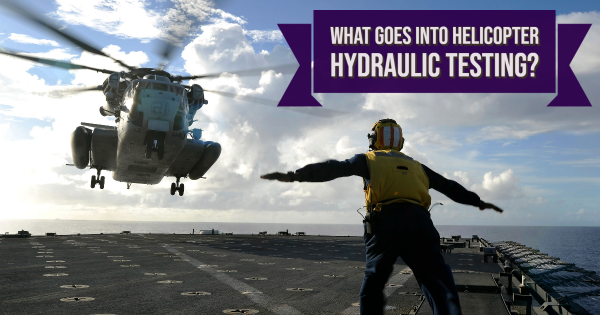Based on Statista, the United States has the largest helicopter fleet in the world. These include large helicopters such as Blackhawks. These helicopters require substantial force to move flight control surfaces like the swashplate and tail rotor pitch slider, hence hydraulics are used to power them. Retractable landing gear, rotor brakes, cargo doors, and wheel brakes, if present, are also hydraulically powered. So, let us talk about the ‘power steering’ for helicopter pilots, the hydraulics system.
Blackhawk hydraulics consists of multiple hydraulic systems comprised of many components, namely hydraulic valves, hydraulic actuators, hydraulic filters, a cooling radiator, a distribution manifold, a tail rotor shutoff valve, and a pump. The hydraulic system pressure on a Sikorsky S92 is up to 3000psi, so without it, the pilot wouldn’t be able to control the helicopter manually. It’s vital to carry out all the necessary hydraulics system tests before a flight during pre-flight inspection.
Ground Tests
There are two main categories of ground tests. Tests performed on the ground test rig or pre-flight tests are categorized as hydraulic system rig tests. They are to verify system functionality, performance, and proper integration with the helicopter, as well as identify failure modes and determine its endurance. The two systems to check are the accumulator and the hydraulic isolator. Executing these checks will ensure that you have a properly operating and maintained hydraulics system.
Flight Tests
The primary goal of the flight test program is to verify ground test outcomes. Load holding capacity, system performance, ambient, and fluid temperatures, and cockpit indications are among the issues to be assessed. Flight control activities associated with dual hydraulic systems (for example, Blackhawk hydraulics) will be evaluated in a series of flights with both hydraulic systems functioning and operating. Pressure, temperature, position, and vibration transducer readings are recorded and analyzed. The test will include all critical flight modes, including service ceiling, cruise altitude, maximum speed, and maximum banking. All utility functions used during the flight will be evaluated, including landing gear, brakes, and winches. In addition, any emergency backup functionality and manual deactivation functionality will also be assessed, following specific performance requirements.
Hydraulic systems such as Blackhawk hydraulics are used to drive the flight controls and landing-gear mechanisms in aircraft because of their tiny size, high response rates, high load-holding capacity, and excellent power-to-weight ratio. Modern helicopters utilize advanced designs which need the help of hydraulic systems. Give us a call today for more information on Blackhawk hydraulics.

